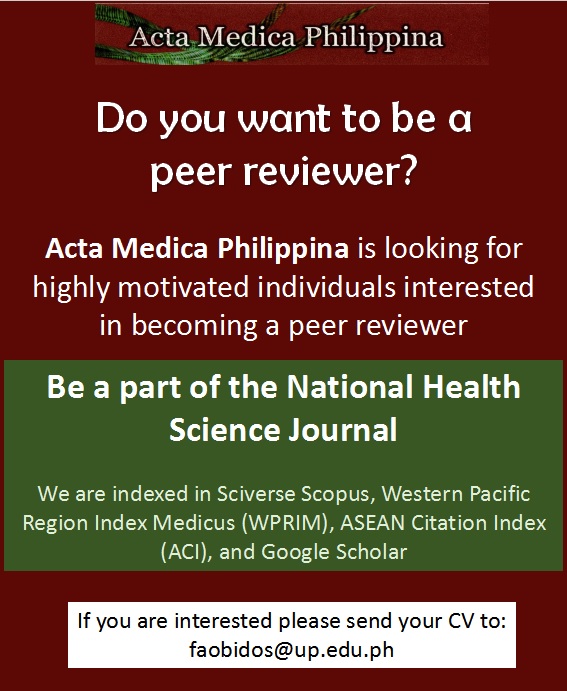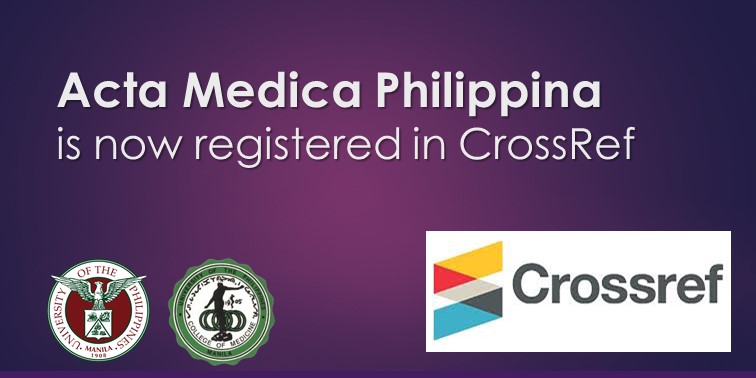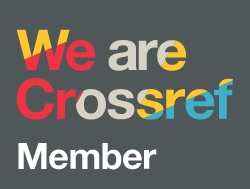Clinical Profile and Drugs of Abuse Identified among People who Use Drugs Admitted to a Tertiary Hospital in the Philippines using a Validated LC-QTOF/MS Method
DOI:
https://doi.org/10.47895/amp.v59i13.11794Keywords:
methamphetamine, LC-QTOF/MS, new psycho-active substancesAbstract
Background. Drug use and abuse is a public health issue that has come into focus in the Philippines in the past years. Excluding the years of the COVID-19 pandemic, there has been a yearly increase in the number of admissions to treatment and rehabilitation centers. The census in the University of the Philippines-Philippine General Hospital (UP-PGH) National Poison Management and Control Center (NPMCC) shows a parallel increase in drug-positive patients consulting in the emergency room (ER).
Objective. The objective of this study was to describe the demographic, clinical, and drug use profiles of substance users admitted to the UP-PGH and referred to the NPMCC for drug testing.
Methods. This is a cross-sectional study where participants included patients aged 10 years and above who were referred to the NPMCC for drug testing within three days of the ER consult. Once consent or assent from children was obtained, patients were interviewed and examined. Urine samples were collected for drug screening using drugs of abuse screening test kits. A split sample was sent to the UP Drugs of Abuse Research Laboratory (UP DARL) for analysis using the liquid chromatography quadrupole time-of-flight mass spectrometry (LC-QTOF/MS). The data was encoded in the REDcap platform. The results were analyzed and summarized using descriptive statistics.
Results. Three hundred eighty-four (384) individuals participated in the study and submitted urine samples for testing from 1 January 2019 to 28 February 2020. One hundred thirty-four (134) samples were positive for substances of abuse detected by drug screening test kits for methamphetamine (MAP), delta-9-tetrahydrocannabinol (THC), cocaine, 3,4-methylenedioxymethamphetamine (MDMA), benzodiazepines, and opioids, and by LC-QTOF/ MS analysis. Majority of the patients were males with an average age of 34.54 ± 1.16 years old. Many complained of neurobehavioral changes necessitating consultation at the hospital emergency room. The neurologic and cardiovascular systems were frequently affected. By using the drugs of abuse test kit, methamphetamine was the most common substance of abuse detected and was seen in 40.3% of the samples. Amphetamine type stimulants were the most common group of drugs identified by LC-QTOF/ MS analysis and was seen in 103 instances. New psychoactive substances detected more frequently than others include paramethoxymethamphetamine (PMMA), 3,4- methylenedioxy methamphetamine (MDMA) and 3,4- methylenedioxyamphetamine (MDA). A few cathinones like butylone and cathinone were also detected.
Conclusion. Methamphetamine was the most common substance of abuse detected in urine samples of the participants. New psychoactive substances were also detected in urine samples when LC-QTOF/MS analysis was utilized. Most persons who use drugs are unemployed young- to mid-adult males. The participants often had neurobehavioral and cardiovascular signs and symptoms.
Downloads
Published
Issue
Section
License
Copyright (c) 2025 Acta Medica Philippina

This work is licensed under a Creative Commons Attribution-NonCommercial-NoDerivatives 4.0 International License.




.jpg)



